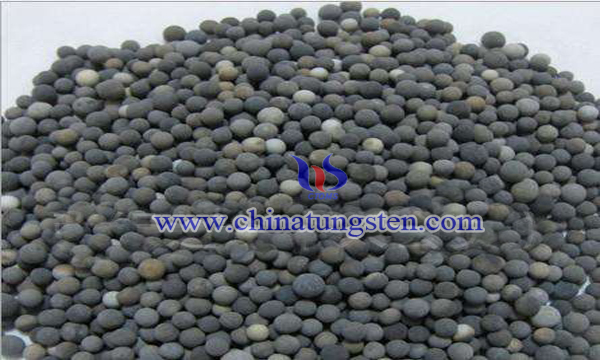Cerium-Zirconium-Tungsten Composite Catalyst Material
- Details
- Category: Tungsten Information
- Published on Tuesday, 24 September 2019 22:44
Nitrogen oxides (NOx) are known to be harmful to the environment. It is necessary to process gases containing these oxides or gases originating from motor vehicles or fixed engines to convert them into nitrogen. One known treatment is SCR selective reduction.

In SCR selective reduction, in the presence of accelerators, the reduction of NOx is carried out with ammonia or ammonia precursors such as urea. However, the effect of SCR still needs to be improved, and the effect of low temperature still needs to be improved. Therefore, it is necessary to find catalysts with improved ammonia storage capacity.
Some researchers have proposed a composite catalyst material for the extraction of cerium, zirconium and tungsten. The synthesis process of this composite catalyst material includes:
1.Mix 153g zirconium sulfate solution (17.3wt%, as ZrO2) and 40g cerium nitrate solution (20wt%, as CeO2) with 4L water. The alkaline solution (6N ammonia) was then added to the mixture to adjust the pH value to 9.5. The precipitation was recovered by filtration and impregnated with 11.2g ammonium metatungstate solution (50wt%, WO3). The impregnated product was then scorched at 800 ℃ (4 hours of stable phase, 4 ℃/min heating).
2.Obtain oxides: ceria: 5% to 30%; tungsten oxide: 2% to 17%; the rest is zirconia; contact or mix the solution or suspension of cerium salts or cerium compounds with compounds based on tungsten and zirconium hydroxide, and then calcine the mixed products to obtain cerium-zirconium-tungsten composite catalyst material.
The cerium-zirconium-tungsten catalytic compositions and systems can be used as catalysts for the catalytic oxidation of carbon monoxide gas and hydrocarbons contained in the gas. Gases that can also be processed, such as those from gas turbines, thermal power plant boilers or internal combustion engines of motor vehicles.
- Tungsten Oxide Manufacturer & Supplier, Chinatungsten Online: www.tungsten-oxide.com
- Tungsten News & Prices of China Tungsten Industry Association: www.ctia.com.cn
- Molybdenum News & Price: news.molybdenum.com.cn
- Tel.: 86 592 5129696; Fax: 86 592 5129797; Email: sales@chinatungsten.com



 sales@chinatungsten.com
sales@chinatungsten.com